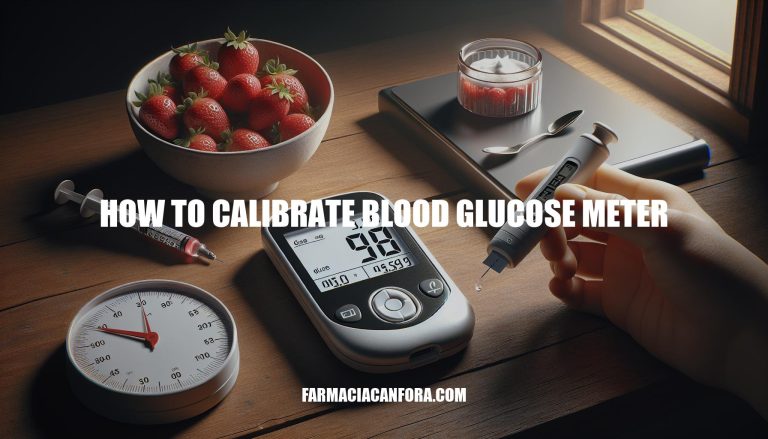Calibrating a blood glucose meter is crucial for accurate blood sugar readings. Proper calibration ensures that the meter provides reliable data, which is essential for effective diabetes management. Accurate readings help in making informed decisions about medication, diet, and lifestyle adjustments, ultimately aiding in better control of blood sugar levels and preventing complications.
Step 1: Gather Necessary Supplies
Here are the supplies needed to calibrate a blood glucose meter:
- Blood glucose meter
- Test strips
- Control solution
- Lancets
- Lancing device
Step 2: Check Expiration Dates
Checking the expiration dates on test strips and control solution is crucial because expired materials can lead to inaccurate blood glucose readings. This can result in incorrect insulin dosages or dietary choices, potentially harming your health. Always ensure they are within their valid dates to maintain accurate and reliable results.
Step 3: Insert Test Strip
- Turn on the meter if necessary.
- Insert the test strip into the designated slot or port.
- Ensure the strip is fully inserted and properly aligned with the meter.
- Check the display for a coding number or dashes if the meter is new.
Your meter is now ready for calibration.
Step 4: Apply Control Solution
Sure, here are the steps:
- Shake the control solution vial thoroughly.
- Remove the cap from the control solution bottle.
- Wipe the tip of the bottle and discard the first drop into a tissue.
- Insert the test strip into the meter. The meter will turn on.
- Squeeze the bottle until a tiny drop forms at the tip.
- Touch the drop to the edge of the test strip. Do not put the solution on top of the strip.
- Wait for the meter to display the result.
Step 5: Read and Compare Results
-
Read the Result:
- Turn on the blood glucose meter.
- Insert the test strip into the meter.
- Prick your finger with the lancet and apply a drop of blood to the test strip.
- Wait for the meter to display the blood glucose level.
-
Compare with Control Range:
- Locate the control range on the test strip vial (usually printed on the label).
- Compare the displayed result on the meter with the control range.
- Ensure the result falls within the specified range for accurate readings.
If the result is outside the control range, repeat the test with a new strip. If it consistently falls outside the range, consult your healthcare provider.
Step 6: Adjust Calibration if Necessary
If your blood glucose meter reading is outside the control range, follow these steps:
- Check the Test Strips: Ensure they are not expired and are stored correctly.
- Clean Hands and Meter: Wash your hands thoroughly and clean the meter.
- Repeat the Test: Use a new test strip and try again.
- Control Solution Test: Use the control solution to check the meter’s accuracy. If the reading is still outside the range, proceed to calibration.
Calibration Steps:
-
Manual Calibration:
- Turn on the meter and insert a test strip.
- Enter the code from the test strip vial into the meter.
- Confirm the code to calibrate the meter.
-
Automatic Calibration:
- For meters with automatic calibration, insert the test strip or disc, and the meter will calibrate itself.
If issues persist, consult the meter’s manual or contact customer support.
To Calibrate a Blood Glucose Meter
Follow these key steps:
- Ensure you have all necessary supplies, including test strips, control solution, lancets, and a lancing device.
- Check the expiration dates of test strips and control solution to maintain accurate results.
- Turn on the meter, insert a test strip, and check for any coding numbers or dashes.
- Shake the control solution vial, remove the cap, and wipe the tip before inserting the test strip into the meter.
- Squeeze the bottle until a drop forms at the tip and touch it to the edge of the test strip.
- Wait for the meter to display the result and compare it with the control range on the test strip label.
- If the result is outside the range, repeat the test or consult your healthcare provider.
Regular calibration is crucial for accurate readings, as expired materials can lead to incorrect insulin dosages or dietary choices, potentially harming your health.


